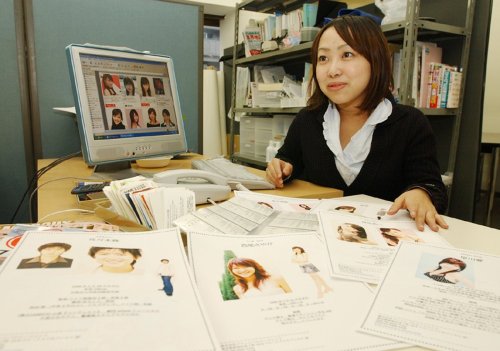The 2 billion women in Asia are still paid less than men for similar work and are extremely underrepresented in top leadership positions, according to a report that estimates limits on female employment cost the region $89 billion a year in lost productivity.
The Asia Society survey on women’s status in health, education, economic activity and political leadership urges improvements to ensure the region benefits fully from its underused pool of human talent.
While the status of women varies widely from country to country from one category to the next, overall, “to continue in this direction would put in peril Asia’s many achievements,’’ said the report, compiled by Astrid S. Tuminez, a professor at the Lee Kuan Yew School of Public Policy in Singapore.
The report cited United Nations data in estimating the lost productivity for Asia at $89 billion a year because of limits on female employment.
Overall, based on various measures _ the report also uses data from The Economic Forum and other sources _ the gender gap was narrowest and women’s leadership strongest in New Zealand, Australia, the Philippines, Sri Lanka and Mongolia.
The gap was widest in Pakistan, Nepal, India, South Korea and Cambodia.
“Some economies in Asia with the highest human development rankings also perform most poorly in some measures of women’s leadership,’’ it said, referring specifically to Japan and South Korea.
Asia leads the world in terms of the number of years women have governed as heads of state, and currently has four women leaders. But the report attributes that to dynastic traditions calling for women to take over from fathers, husbands or sons when they die, are imprisoned or killed.
It said the problem begins before birth, with sex-selective abortions and infanticide due to a preference for sons in countries such as China and India.
It said the bias in favor of sons means that girls in some countries receive poorer medical care, nutrition and education than boys, especially in developing countries.
The discrepancy in schooling leaves the majority of women in four Asian nations illiterate, the report said, citing literacy rates of 10 percent in Bhutan, 16 percent in Pakistan, 25 percent in Nepal and 31 percent in Bangladesh.
Although women live longer in Asian nations as in other regions, such disadvantages affect health and earning power over a lifetime, the report noted.
“From the very start, girls in Asia face significant obstacles to fulfilling their human potential, in general, and their potential for leadership, in particular,’’ Asia Society President Vishakha N. Desai said in introducing the report.
Pay gaps remain significant, the report said, with the ratio of women’s pay to men’s lowest in South Korea, at 51 percent, below that of Nepal, Bangladesh and China. Japan’s was not much better, at 60 percent.
The narrowest gaps, the report found, were in Malaysia and Singapore, at 81 percent, and Mongolia and Thailand, at just under 80 percent. Globally, women’s pay is 20 percent to 30 percent less than men’s, on average.
As far as women in senior corporate positions, Japan came in worst in the region with just 5 percent of those postions held by women.
Thailand and the Philippines ranked highest in this regard, with women holding 39 percent of senior level positions, while India came in at 14 percent and China 25 percent, it said, citing a survey by human resources consultancy Grant Thornton International.
The percentage of women on corporate boards was much lower, with Japan at 0.9 percent, South Korea at 1.9 percent and China at 8.5 percent. New Zealand ranked highest, at 9.3 percent. The global average is 21 percent, down from 24 percent in 2009, the report said.
The report suggests specific countermeasures, such as providing more mentoring, more generous parental leaves, childcare and elder care, and gender-equal retirement packages would encourage women to persevere with their careers to top management positions.
But more fundamentally, it urges greater education aimed at valuing girls and women on a par with boys and men, steps to end sex selective abortions and improvement in women’s property rights and other protections to ensure they can contribute fully to society.
The Asia Society, based in New York, is a global non-profit organization seeking to promote closer ties between Asia and the West through arts, education, policy and business outreach. (AP)
<관련 한글 기사>
“한국, 아시아서 남녀불평등 가장 심해”
남녀 임금격차도 제일 커…여성 임금 남성의 평균 51%
한국이 아시아에서 남녀 불평등이 가장 심각한 나라 중의 하나로 꼽혔다.
또 한국 여성의 임금은 남성 임금의 평균 51%로 아시아 국가 중 가장 낮았다.
뉴욕에 있는 비영리재단인 ‘아시아 소사이어티’는 건강, 교육, 경제활동, 정치 리더십 등의 분야에서 아시아 여성의 지위 실태를 조사해 발표했다.
보고서는 한국과 일본은 인재개발이 가장 우수한데도 불구하고 여성 개발은 매우 초라했다고 지적했다.
보고서는 아시아에서 남녀 임금 격차가 크고 여성 지도자들이 극히 적은 현실은 연간 890억달러의 생산성 손실로 이어지고 있다고 강조했다.
싱가포르 리콴유 공공정책학교의 애스트리드 투미네즈 교수가 편집한 이 보고서는 여성의 지위가 나라별로, 분야별로 매우 다르다며 “그러나 전반적으로 이런 추세가 계속되면 아시아는 많은 성과를 상실할 우려가 있다”고 예측했다.
남녀 불평등이 가장 심한 나라는 한국, 파키스탄, 인도, 캄보디아로 나타났다.
남성 임금 대비 여성 임금의 비율은 한국이 51%로 가장 낮았으며 이어 네팔, 방글라데시, 중국이었다. 일본도 60%로 그다지 높지 않았다.
기업 간부 중 여성의 비중은 일본이 5%로 가장 낮았으며, 태국, 필리핀이 39%로 제일 높았다. 인도는 14%, 중국은 25%였다.
기업 임원 중 여성의 비율은 일본 0.9%, 한국 1.9%, 중국 8.5%로 세계 평균 21%에 훨씬 못미쳤다.
아시아는 다른 대륙에 비해 여성 국가 원수를 가장 많이 배출했으나 이는 아버지, 남편, 아들이 사망하거나 수감 또는 살해됐을 때 이를 잇도록 하는 왕조시대적 전통 때문으로 분석됐다.
보고서는 남녀 불평등은 태어나기 전부터 시작된다며 중국, 인도에서 성행하는 남녀 성별 낙태, 여아 살해 등을 예로 들었다.
보고서는 남아 선호로 인해 여자 어린이들이 의료, 영양, 교육을 제대로 받지 못하고 있다고 말했다.
보고서는 이를 개선하기 위해서는 여성 지도자 양성, 육아 휴가 확대, 어린이 및 노인 부양 지원, 남녀평등한 은퇴 프로그램 등이 필요하며, 무엇보다 남녀의 가치를 동일하게 평가하게 하는 교육이 필요하다고 강조했다. (연합뉴스)








